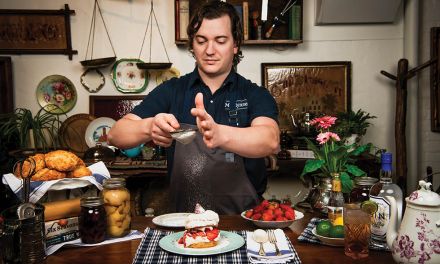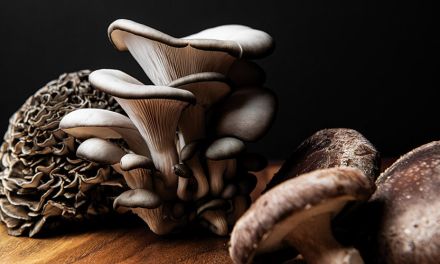The Ingredients Tell Us What to Make
By Elizabeth Rush Brooks | Photography by Ksenija Hotic
From sugar shacks to dinner parties, Trish Magwood’s way of life is guided by the seasons—and the people around her table.
It’s not a surprise that one of the best descriptors of Trish Magwood’s approach to food, her cookbooks, and her cooking itself is found in her own words in the introduction to her most recent book, My New Table: “I live my life with one shoe in the city, one boot on the farm…”
Although Trish has a beautiful home in Toronto—the setting for much of My New Table—she still considers her parents’ property, Four Wheel Farm in Creemore, to be home. Mother Nature, community, her mother and grandmothers, her father, her family, and her friends are the essence of Magwood’s lifestyle.
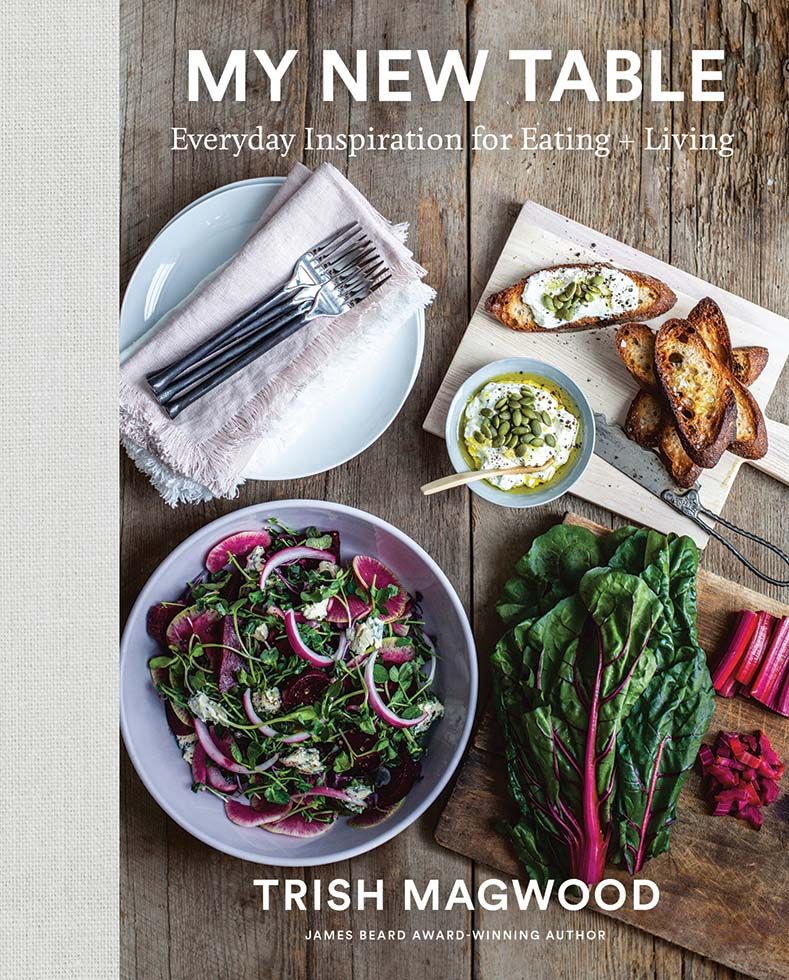
Life in the country—especially the outdoors bordering Georgian Bay—follows the seasons, and the recipes in each chapter of My New Table begin with spring. With its rich, diverse forests and abundance of sugar maples, the Escarpment is a quintessential place for the time-honoured spring ritual of tapping trees for maple syrup. Although Trish’s father extends an open invitation to friends and family to help tap the trees and empty the buckets, he often ends up alone in the bush. Maple syrup, much like farming and gardening, is weather dependent, and many Magwood family conversations include predictions for days above zero and nights below freezing to get the sap flowing. Both Magwood Maple Syrup and Magwood Wildflower Honey are available in local markets as well as Trish’s online store (trishmagwood.ca). Alongside the deciduous trees of the Escarpment, wild leeks dot the spring forest floor and provide seasonal inspiration.
The dedication in Trish’s first published cookbook, James Beard Awardwinning Dish Entertains, celebrates her lifelong cooking and living ethos: “for my family—four generations of good cooks and happy eaters.” The acknowledgements begin with gratitude to her family, from her grandparents to her own children. Themoverall outline of the book loosely follows a celebratory dinner: hors d’oeuvres, soups, salads, mains, sides, and desserts. Each chapter is split into “everyday simple” and “special occasions.”
This theme of family and the central role it plays in Trish’s cooking and love of food continues in her second book, In My Mother’s Kitchen: Three Generations of Simple, Delicious Family Food. In it, Magwood shares more about her father’s contributions as the family farmer. Trish likes to say he became a commercial farmer by accident, his massive hobby outgrowing what family and friends could consume from the property—produce, honey, and maple syrup included.
This is especially true with asparagus. The Magwoods have an annual asparagus frenzy. Fields stretch beyond view, and although asparagus grows rapidly, there is a bit of a family holdback for the early harvest. Trish’s father, Chuck, plants, grows, and reaps, while her mother, Lee, trims and bundles the spring stalks. Chuck delivers many to the 100 Mile Store in Creemore. Eventually, family and community members are invited to help and receive their own bundles. This spring excitement—and the replanting of lettuce seedlings lovingly nurtured in the greenhouse—is reflected in My New Table, where each chapter follows the seasons. Trish calls herself a “butter-and-olive-oil, salt-and-pepper kind of cook” and believes in letting the “ingredients do all the work,” especially when using her father’s lettuces and asparagus. This is showcased in her Spring Pea or Asparagus Risotto and her Raw Spring Salad, where the way ingredients are cut makes all the difference in presentation.
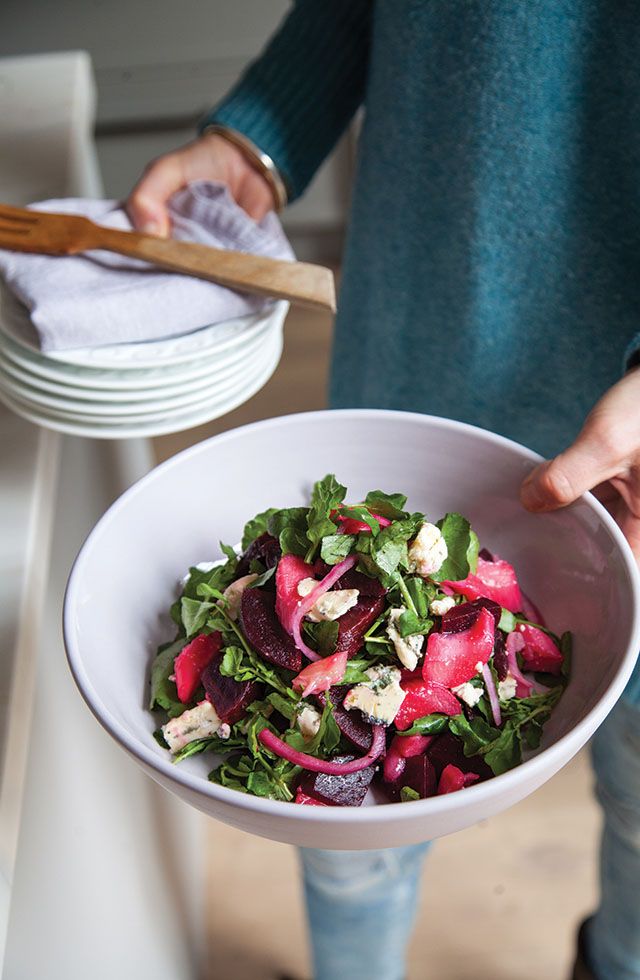
Beet & Rhubarb Salad with Pickled Red Onions

BBQ Maple Trout & Swiss Chard
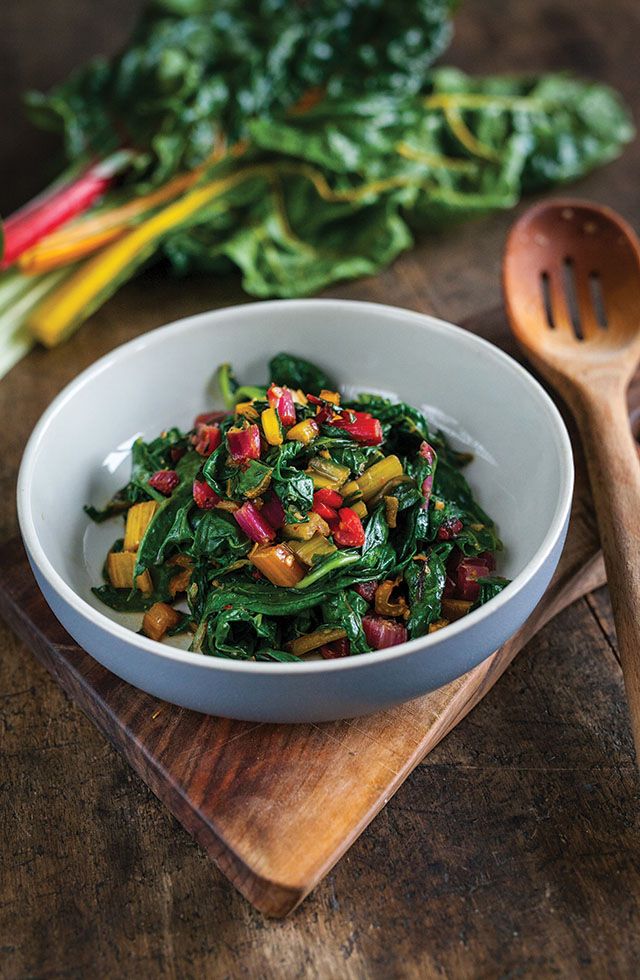
Chili Garlic Chard
Magwood’s cookbooks are written a decade apart and reflect her evolving life. Each resembles a chapter. Dish Entertains was written when she owned and operated a cooking school and catering company and hosted a Food Network show—just a few of the many ventures she pursued in her twenties and early thirties. In My Mother’s Kitchen is the book of a busy young mom who wanted to simplify life and honour family traditions. My New Table celebrates the next decade, one where life throws a few curves and shakes up plans, encouraging Trish to venture into new places and perspectives. Family remains the central focus, but hearth, lifestyle, friendship, and gratitude are woven in through essays and little stories.
Although never absent from her life or cooking—her first cookbook was a collection of favourite recipes for friends who stayed an extra year at Queen’s University after the rest of the group graduated—Trish’s friends are even more influential in this phase of her foodie life. She speaks highly of their cooking skills and how they all share ideas and inspiration. Friendly ski-lunch competitions led Trish to up her winter weekend lunch game. Her children, and those of her friends, are growing up and leaving home—temporarily for school or permanently for new chapters—and Trish and her friends have more time. More time to gather and invest in their own hobbies.
Two close friends, Sarah Bellamy and Kara Macintosh, who also have places in Creemore, have become avid gardeners, and dinner ideas often come from what’s fresh in their gardens. Many gatherings focus around food, no matter the purpose—book clubs, mahjong nights, community meetings, euchre tournaments (see Trish’s Christmas Euchre Tourney Salad, created before she learned to play the game), or casual socials. These gatherings are rich sources of inspiration. Friends exchange ideas, ingredients, and garden produce. This spirit of sharing is not unlike the bartering systems of early settlers: one person has an overgrowth of basil, another fresh microgreens, yet another an abundance of tomatoes. Before writing My New Table, Trish and Kara talked about co-authoring a book called Summer Eats, featuring the seasonal dishes the friends bring to each other’s dinner parties.
For Trish Magwood, the context and meaning of dining with loved ones enhances every dish. Some nights she and her mom meet over FaceTime to share a simple omelette—breakfast for dinner. When she doesn’t know what to cook, she lets the ingredients—mostly locally sourced—guide her. Just as often, inspiration comes from her family and community. She believes, “Collectively, we are the sum of our parts and we have to share. That is our job.” E



